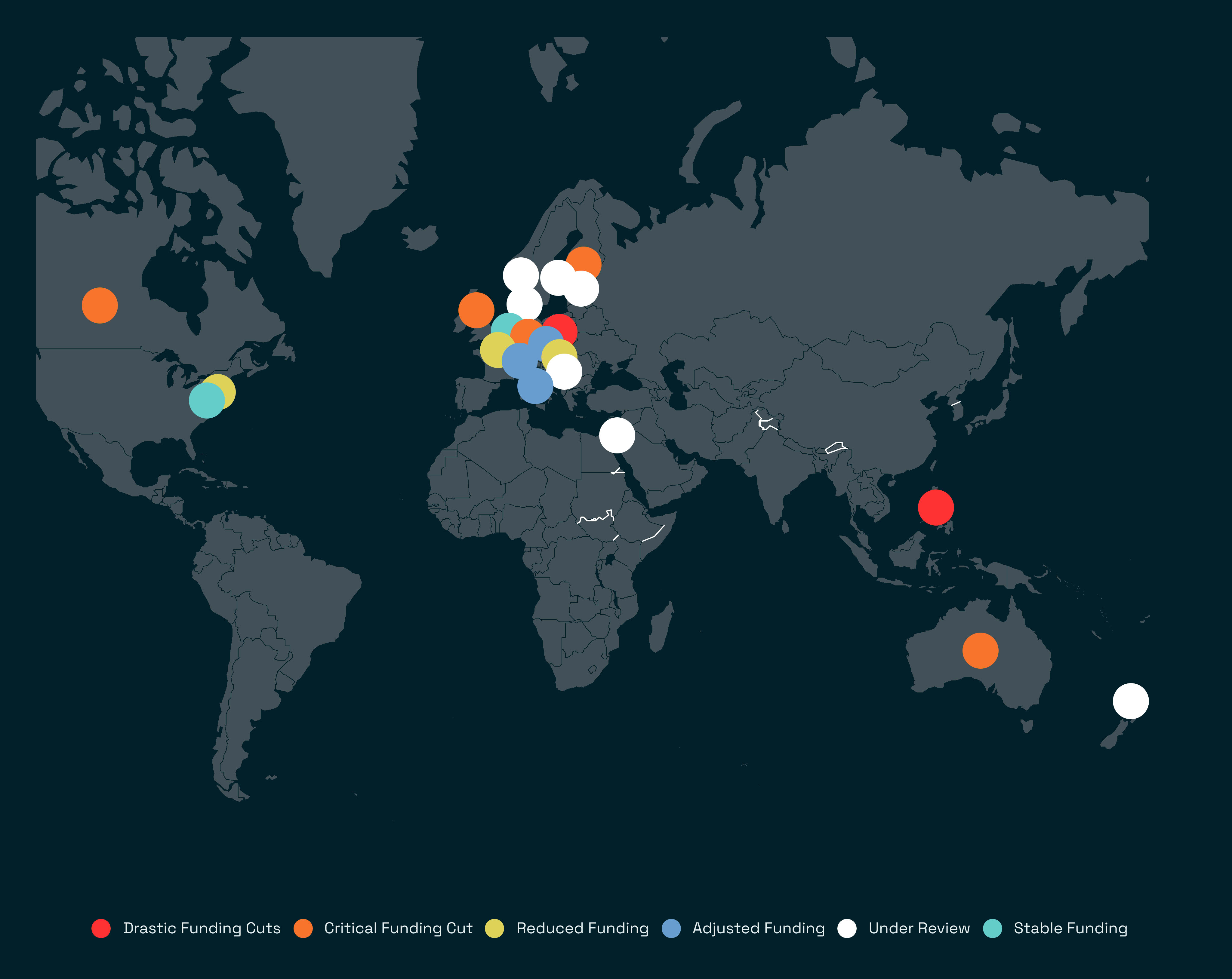This post was primarily authored by Kiryl Shantyka (EA Sweden), James Herbert (EA Netherlands), and Rocky Schwartz (EA NYC). They received initial feedback from many MEARO leaders and some initial feedback from Caleb Parikh (EA Funds) and Naomi Nederlof (CEA Community Building Grants Manager), though they don’t necessarily endorse all of the points made in this post. All mistakes are the authors' own.
Introduction and Request for Contribution
Last month, we introduced a new term: Meta EA Regional Organisation (MEARO) and invited the broader EA community to participate in discussion on the value and evaluation of these organisations. This post focuses on funding for MEAROs. We share information on recent changes in MEARO funding and request contributions to funding data collection efforts. We think there is strong potential for a more structured MEARO funding strategy, backed by robust data. Our hope is to spark a conversation that ensures MEAROs' work is intentionally supported and their significance fully recognized.
We think the EA community might want to answer the questions:
- What percentage of EA funding should go to meta work?
- What percentage of meta work funding should go to meta EA regional organisations (MEAROs)?
To answer the above questions, among other considerations, we need to know:
- The current state of MEARO funding.
- How the MEARO funding landscape has changed in the past year.
The results of our investigation are below. We gathered this information by speaking with funders (EA IF and CBG) and MEARO leaders.
Next steps:
- We would like to see better data collection and tracking.
- Two ways to do this are by contributing to the MEARO Funding Map and The Centre for Exploratory Altruism Research’s EA Meta Funding Survey.
Map of Funding Data
To provide a clearer and more nuanced overview of the MEARO funding situation, we've developed an interactive map. It's important to note that our current dataset does not fully capture all MEAROs' funding details. Read about our methodology in notes to the map.

We divide existing MEAROs into the following classification categories:
- Stable Funding : Minor increase, adjustment, or no change in funding levels compared to the previous period that hasn’t affected organisational capacity significantly.
- Adjusted Funding: A minor reduction in funding (reported 0-10% reduction of organisational capacity), leading to a slight decrease in operational capacity or FTEs.
- Reduced Funding: A noticeable reduction in funding (more than 10%-30% of organisational capacity), significantly impacting operational budgets and possibly leading to a moderate decrease in FTEs.
- Critical Funding Cut: A major reduction in funding (30-70% of organisational capacity), critically affecting operational budgets and leading to a significant decrease in FTEs.
- Drastic Funding Cut: A dramatic reduction in funding (70%+ of organisational capacity).
- Under Review: Organisations whose funding situation is currently being evaluated or will be reassessed in the near future, with potential for changes.
For MEARO leaders, particularly those with active or adjusted full-time equivalents (FTE), your input is invaluable. By sharing your information through this form, you'll be contributing to a more complete and accurate overview.
MEARO Funding Structure
The historical structure of MEARO funding makes organisations particularly vulnerable to funding cuts because they usually are reliant on one major funder and do not have an independent financial runway.
- Most MEAROs receive 70 to 100% of their funding from institutional funders (e.g. Centre for Effective Altruism (CEA), EA Infrastructure Fund (EAIF)), typically on six- to twelve-month grant cycles. This presents a major threat to the organisation.
- This is compounded by the historical earmarking of grants to specific individuals and projects, rather than to the organisation as a whole. For example, many CEA Community Building Grants (CBG) Programme grant recipients have historically received salary grants directly from CEA(/Effective Ventures), and limited operations budgets tied to staff FTEs. This has prevented many MEAROs from establishing a financial runway.
Closing note
If you have any ideas, suggestions, or thoughts on how different stakeholders could approach the future of funding of MEAROs, please share them in the comments or reach out to the authors of this post. We'll make sure to pass them along to the relevant organisations and decision-makers.

Nice graphic, and interesting (if not surprising) that the trend is towards reduction at the moment.
I'd be interested in hearing more of the authors' and organisers' thoughts about the situation. I'd like to hear your thoughts on questions like
If you've written about this somewhere else feel free to post a link too. I read your "MEARO" post as background
Really appreciate all the work you do.
I'm interested in the authors' take on this question: Change my mind: EA national organisations should be 'professional associations' not 'communities'
Interesting! I didn't see this, will check it out